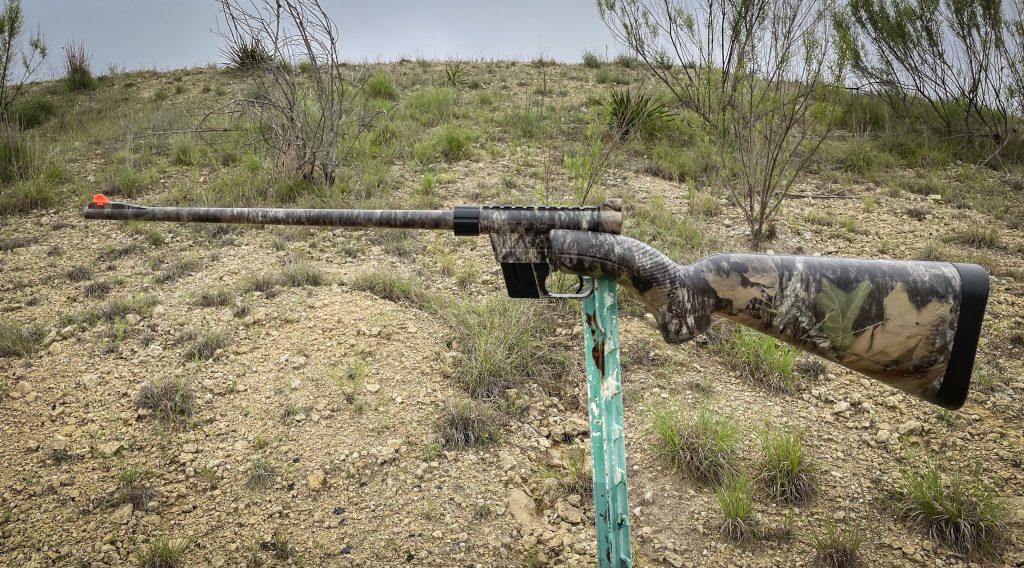
Eugene Stoner designed the AR-7 semi-automatic survival rifle for Air Force pilots back in the 1950s. In the Air Force’s infinite wisdom, the flyboys were never actually issued the gun. Armalite first made and sold a version of the rifle for civilians in 1959. A few other makers produced versions of the gun over the years until, thankfully, Henry took that over after the turn of the millennium.
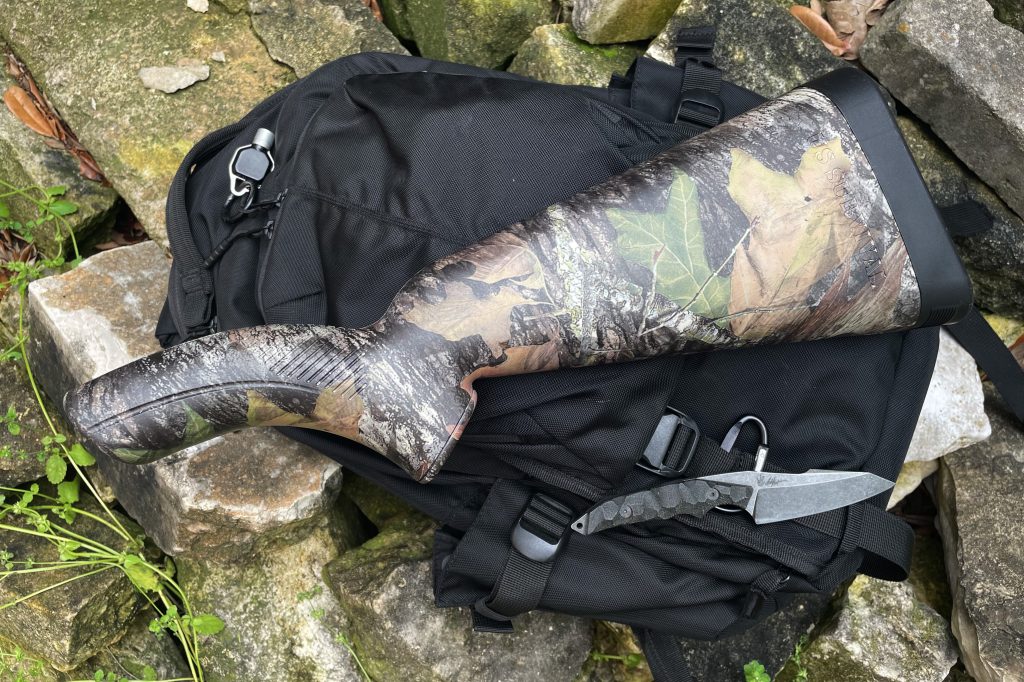
The U.S. Survival Rifle in its compact form is just under 17 inches long. That’s small enough to be carried in most EDC backpacks or stowed in storage areas in most vehicles so it’s always there when it’s needed.
Henry made some slight changes to the original design, improving it and making it more reliable. The rifle that’s sold no as the Henry U.S. Survival Rifle is compact, handy .22LR SHTF-type rifle that’s lightweight, easy to carry, and perfect in a pinch.
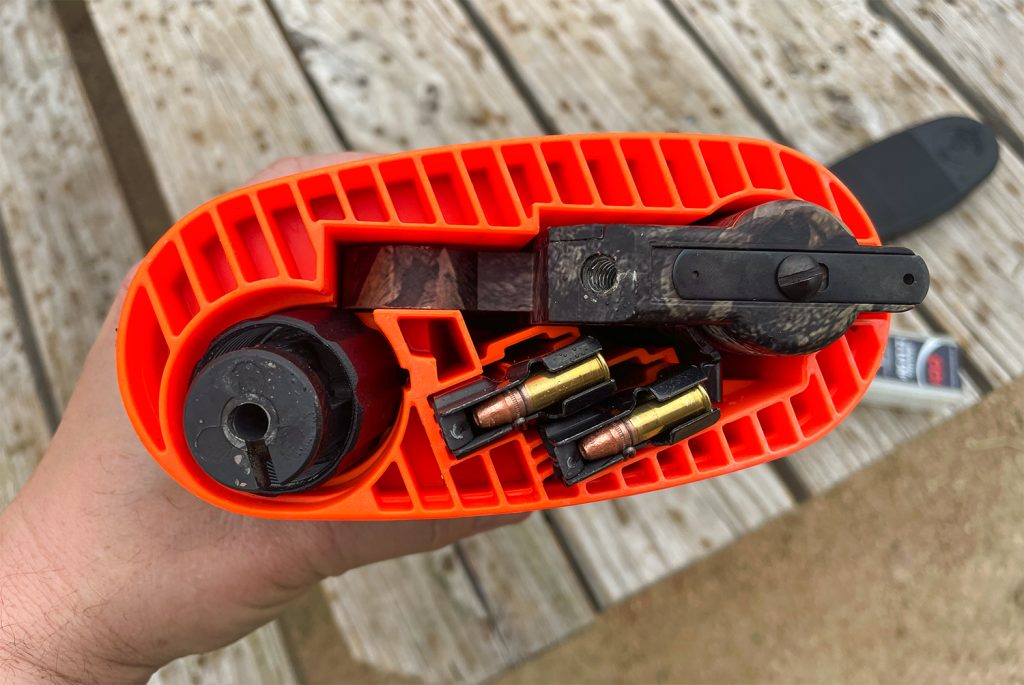
The whole shebang is contained inside the rifle’s polymer stock. You simply remove the rubber-ish butt pad to reveal the goods. In the photo above you see the barrel, two eight-round magazines and the receiver safely stowed inside.
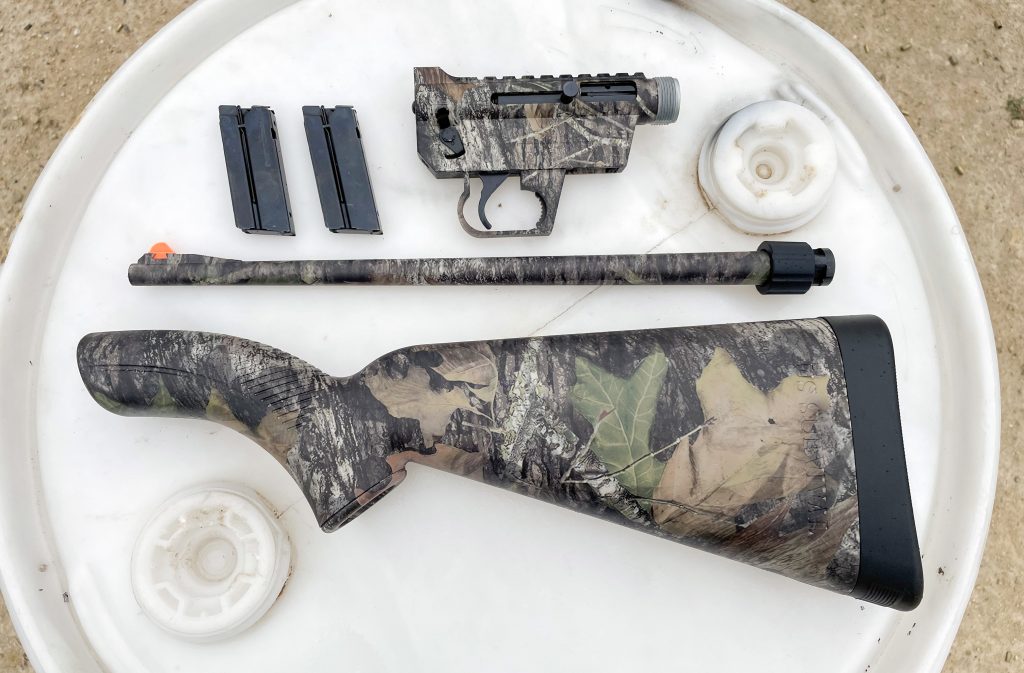
It all fits comfortably and the stock is water resistant. That means it will actually float for a few minutes, before gradually taking on water. Yes, we tried it and it really work.
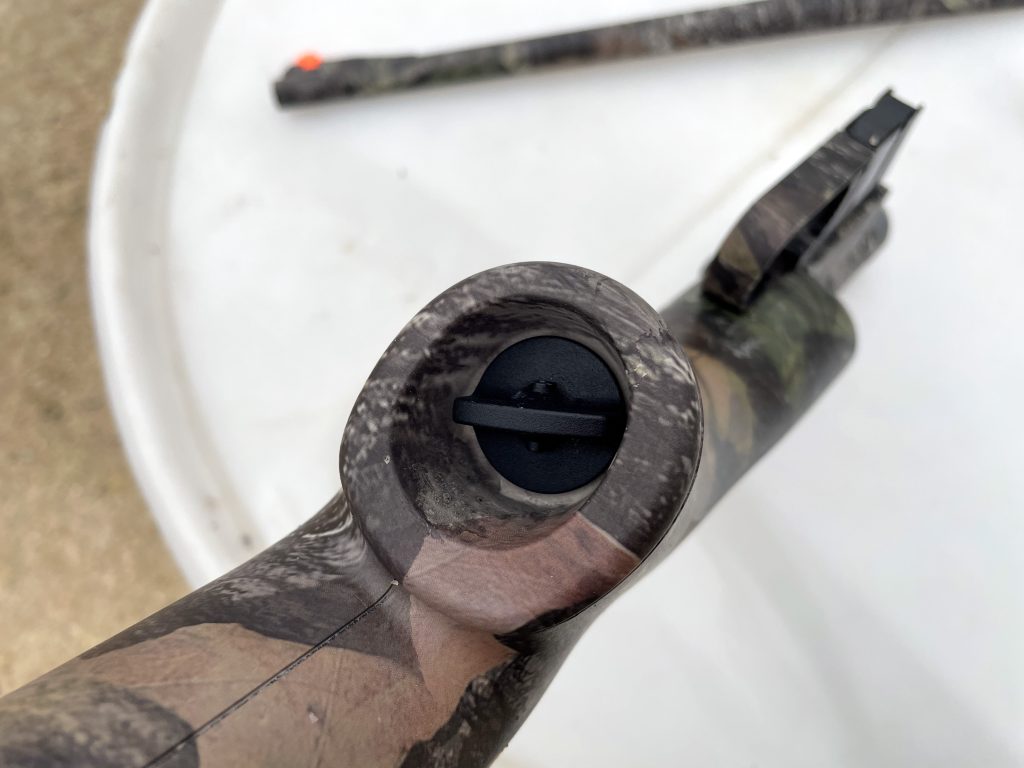
The receiver is held in place in the stock with a screw that’s tightened via a thumbscrew in the base of the pistol grip. The barrel goes on exactly as you’d expect and is tightened with a collet that’s screwed down tight.
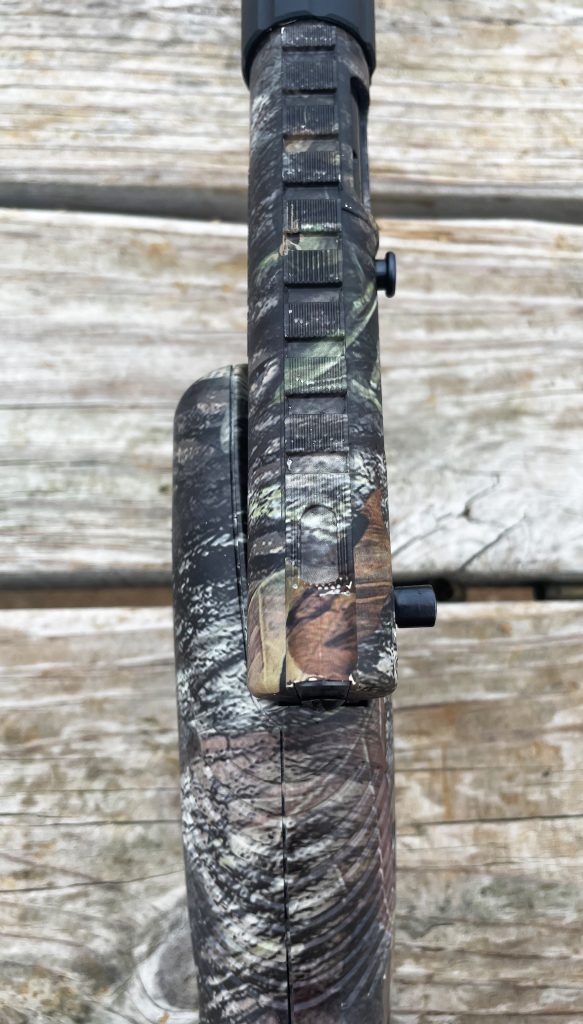
Note that the receiver mounts off-center in the stock. Be aware that the rail machined into the receiver is not a standard Picatinny rail. It’s a 3/8-inch “tip-off” type rail. That’s a shame because you can’t just pop most red dot sights on the Survival Rifle.
A number of makers offer rings for this type of rail if you want to mount a scope. And if you really want to, you can get a 3/8ths to Pic adapter and then mount a red dot sight or scope using rings you probably already have.
Of course, if you do all of that, you’ll have to remove the optic (and rail converter if you go that way) to take the rifle down and stow it, which means you’d lose your zero. Given the Survival Rifle’s intended use, it’s probably best to plan on using the peep sights.
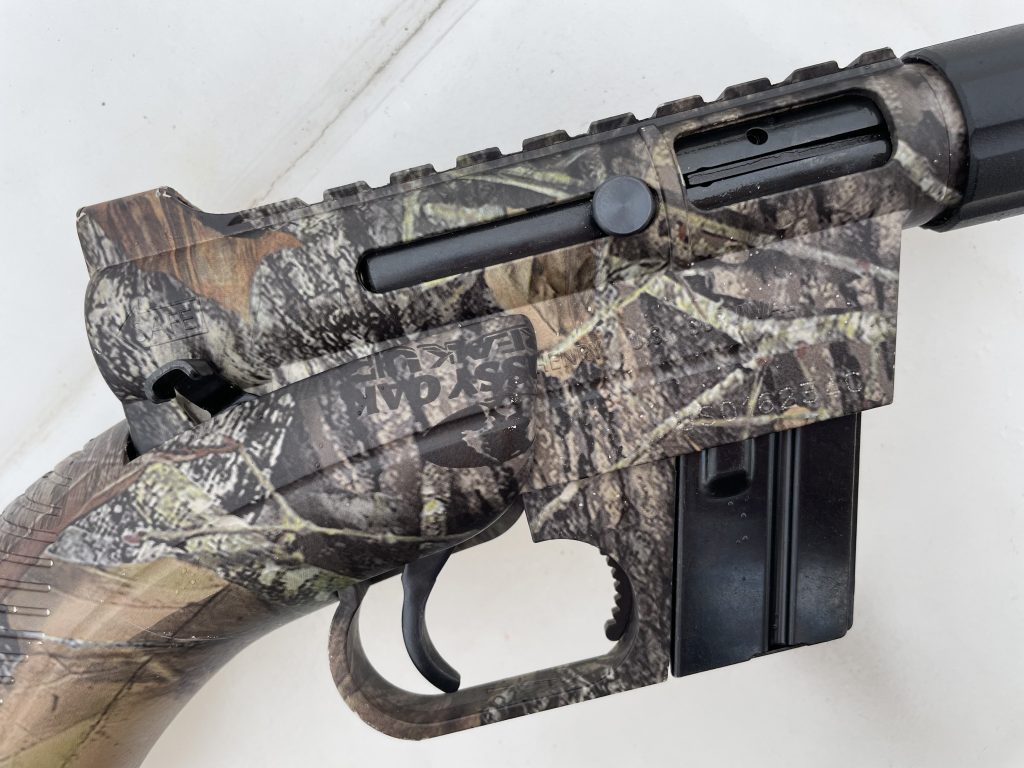
The Survival Rifle comes with two eight-round metal magazines. Pro-tip: order a third magazine from Henry and you can slip it in the receiver and stow it in the stock when the rifle is taken down. That gives you a total capacity of 24 rounds.
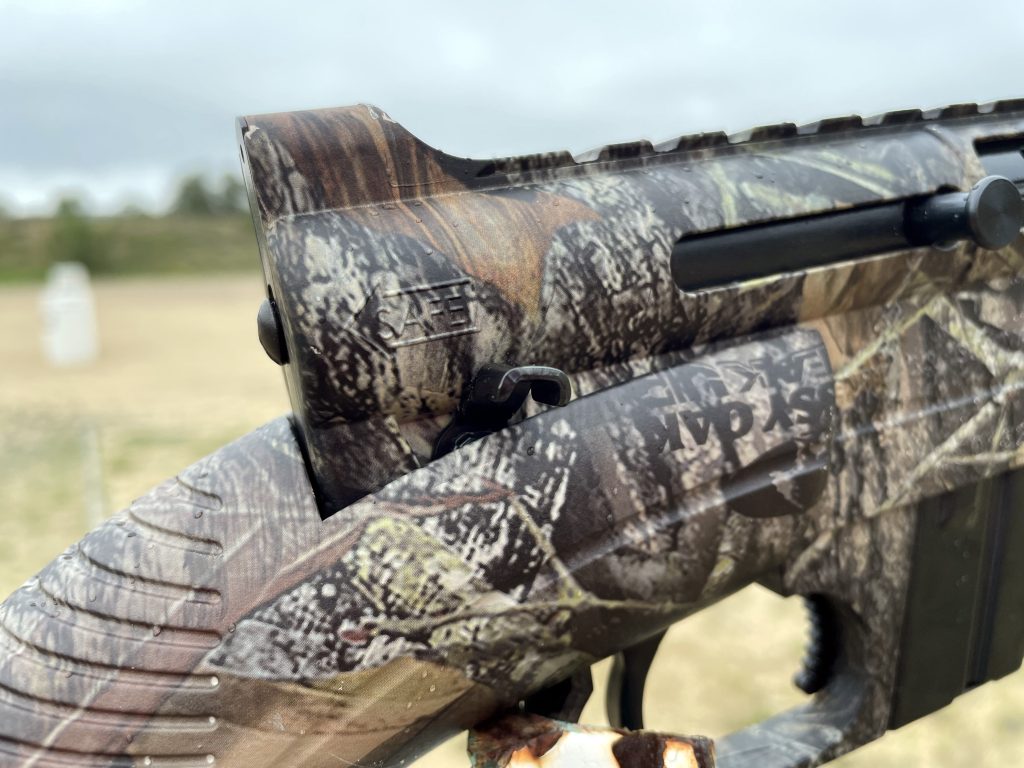
The Survival Rifle has a traditional safety, as every rifle should. Rearward for safe and forward for fire.
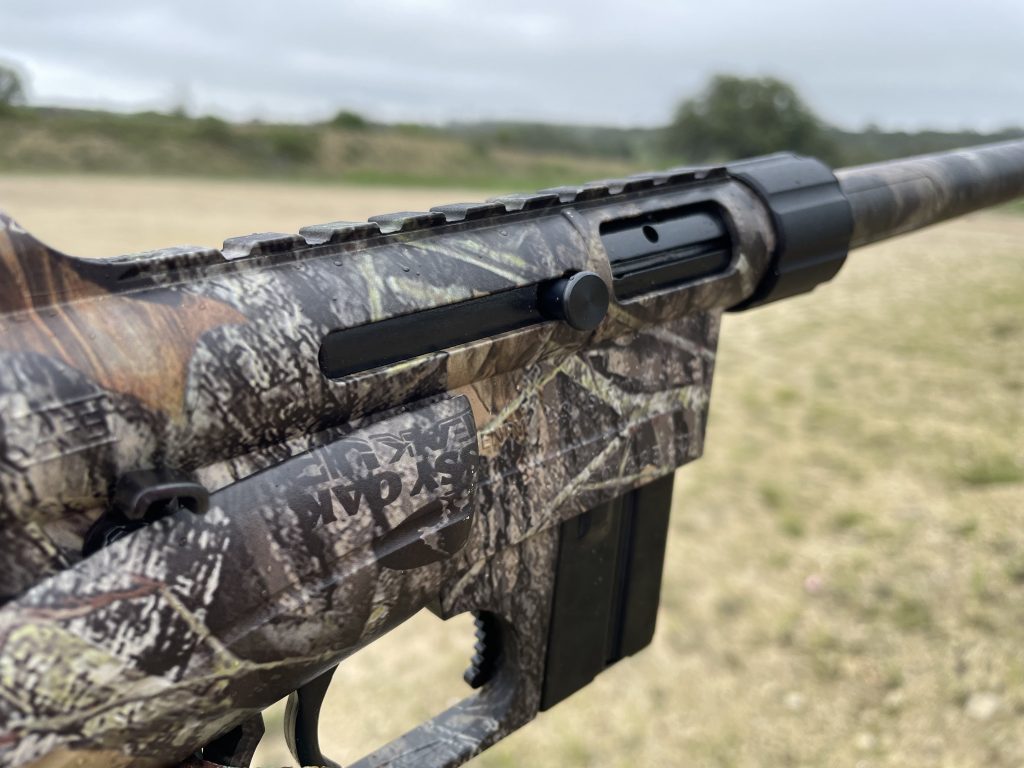
The bolt has a small, retractable charging handle. Note: I’ve owned this rifle for years. You’ll notice the Mossy Oak logo in the camo on the receiver above. Henry now offers the Survival Rifle in black, True Timber Kenati Camo — very similar to the rifle here — and a more desert-ish Viper Western camo. You’ll pay about $50 more retail for the camo models.
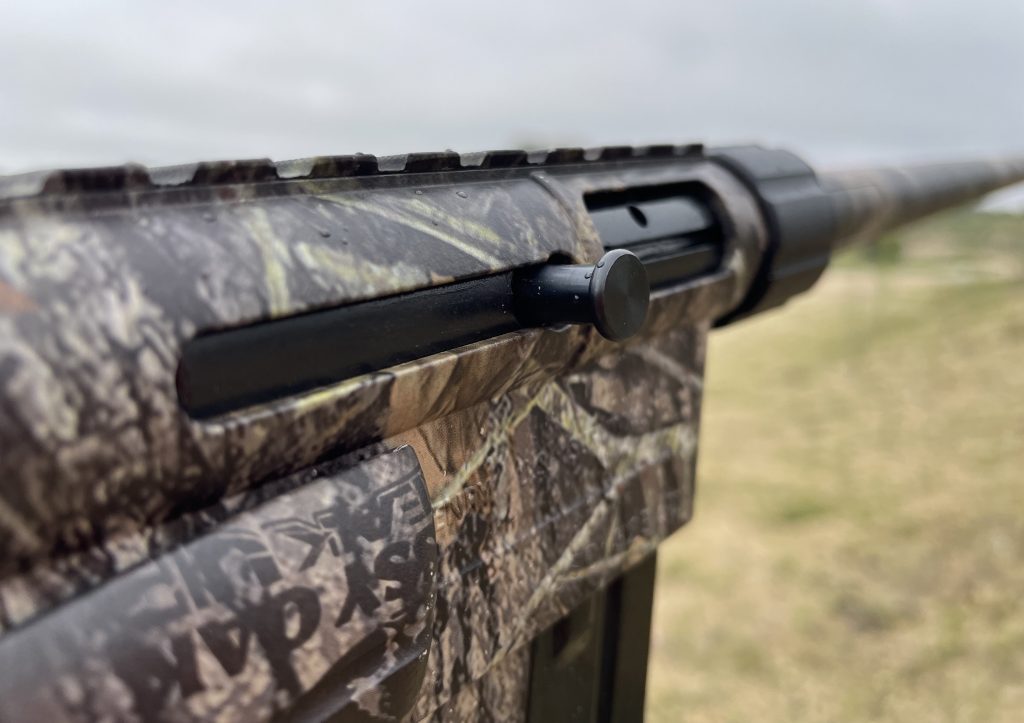
Just slip it out to charge the rifle, loading the first round. The bold doesn’t hold open on empty.
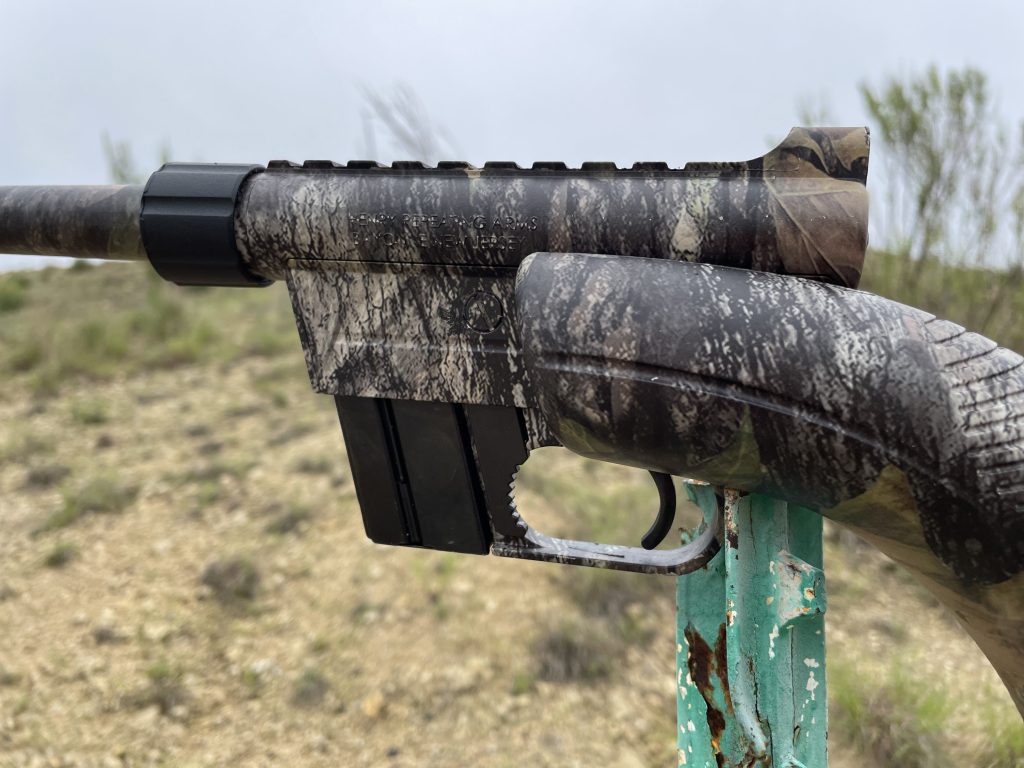
Empty magazines are released with that toothed lever just forward of the trigger.
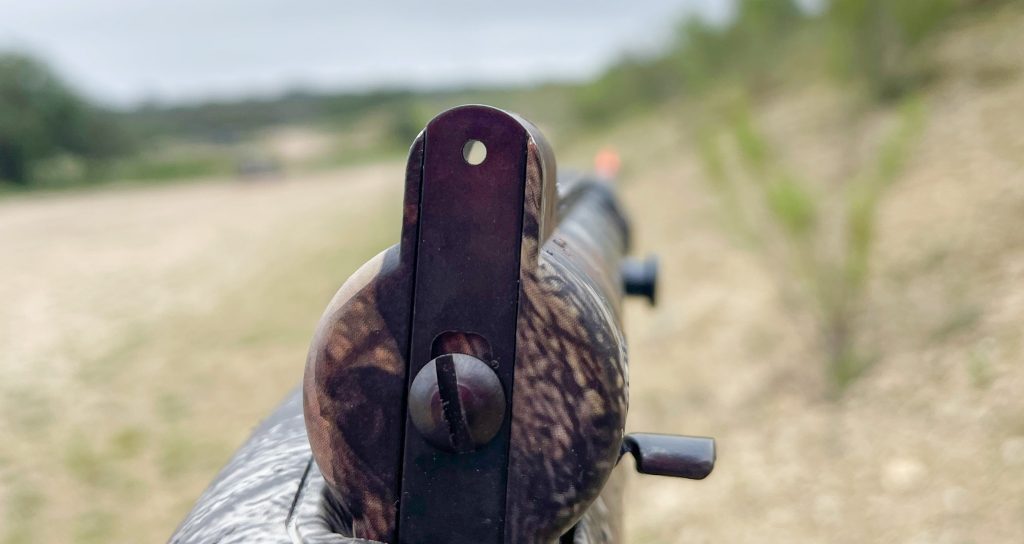
The rear has a small elevation-adjustable peep sight with two aperture sizes. For my money, the smaller one is too small for most uses, but your mileage may vary.
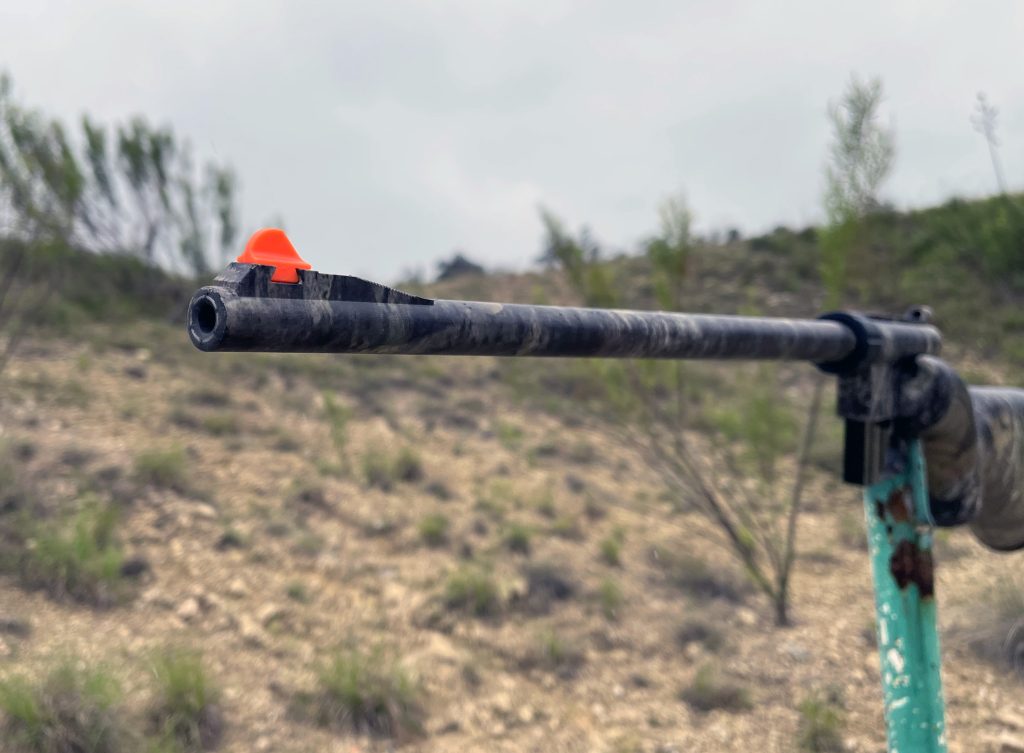
The rear peep sight (with the larger aperture) works very well with the highly visible international orange drift-adjustable front blade.
The Henry Survival Rifle is surprisingly reliable. I’ve own this one for years and have never seen it jam. It’s subject, of course, to the reliability of the ammo you feed it and .22LR certainly has its issues with consistency.
As for accuracy, the Survival Rifle is certifiably…not bad. Keep in mind what this gun is designed to be and do. This is a SHTF gun that you’d use to kill small game and protect yourself if you’re really in a pinch.
I shot the rifle with a range of ammo types and weights from big box bulk stuff like Thunderbolt to better quality loads like CCI Mini Mags. I got the best groupings from the Mini Mags at between 1¾ and 2¼ inches at 50 yards when the rifle is braced. Again, that’s not bad and will get you a squirrel, rabbit or possum if you stomach is empty.
The Henry U.S. Survival Rifle is purpose-built to be compact, lightweight and with you when you really need it. It won’t win any shooting competitions and today’s shooters will increasingly wish the barrel was threaded. It will, however, put a bunny in the pot when you really need one. And thanks to Henry’s updates on the classic (and not always well-made) design, the U.S. Survival Rifle is reliable, affordable, and plenty of fun to shoot. There aren’t many good reasons not to own one.
Specifications: Henry U.S. Survival Rifle
Capacity: 8+1 (two 8-round magazines included)
Barrel Length: 16.125 inches
Overall Length (assembled): 35 inches
Weight 3.5 pounds
Length of Pull: 14 inches
MSRP: $428 (about $350 retail…black model is $350 MSRP and about $299 retail)


“…the U.S. Survival Rifle is reliable, affordable, and plenty of fun to shoot. There aren’t many good reasons not to own one.”
They really missed the boat not threading it. Yeah, yeah, yeah, it’s an aluminum sleeve over the steel barrel insert, they could have dealt with that by turning down the muzzle end, sliding on a steel treading insert, and glue it on with Loc-Tite red compound.
Dan, are those the active noise reduction earbuds you reviewed a few years back at the other blog? got a link for them, please?
Do they have a tendency to fall out on you? Can they deal with centerfire sound pressure levels?
https://goaxil.com/products/xcor
Yep, those are the Axil XCOR buds. No, I’ve never had them fall out. And yes, they handle center fire pretty well. If someone’s using a brake close by, it can get loud, but they generally handle outdoor gunfire really nicely.
I had to modify the front sight. The one that came on mine was awful. Put a fiber optic one on and its all good now.